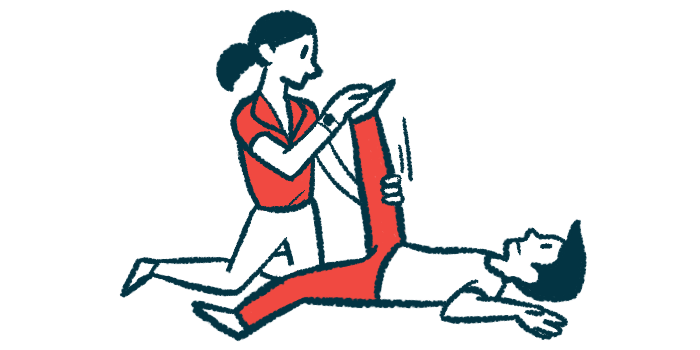Compression garments may improve balance in hypermobile EDS
The tight-fitting apparel also aid proprioception in hypermobile Ehlers-Danlos syndrome

Wearing compression garments — tight-fitting, elastic clothing items — and doing physiotherapy may help people with hypermobile Ehlers-Danlos syndrome (EDS) improve balance and proprioception, a small study has found.
Proprioception refers to a person’s perception of the location and movement of their body.
The study, “Effects of compression garments on balance in hypermobile Ehlers-Danlos syndrome: a randomized controlled trial,” was published in the journal Disability and Rehabilitation by a team of researchers in France.
Hypermobile EDS is the most common among a group of diseases that affect the connective tissue that supports and gives structure to other tissues in the body. Its symptoms include loose, unstable joints that have an unusually wide range of movement and dislocate easily.
Because of this, people with hypermobile EDS often experience trouble with balance and proprioception.
Compression garments are items of clothing that place pressure and fit tightly around the skin. Researchers in France conducted a trial to know if compression garments could add to the benefits of physiotherapy in balance and proprioception.
The study (NCT03359135) included 32 patients who were assigned randomly to physiotherapy alone or in combination with compression garments. Their mean age was 31.9 years, and most (91%) were women. The majority (97%) had joint pain, and many (78%) reported frequent falls.
Physiotherapy was provided three times per week for four weeks. Each session lasted one hour, and exercises were intended to strengthen the muscles of the lower limbs, control posture, and improve balance and proprioception.
Those who wore compression garments received two sets of three items of clothing (leggings, socks, and a vest) that placed an average pressure of 10 to 15 millimeters of mercury. They were worn for a mean 10.4 hours every day for an average 26 days.
Immediate effects
Wearing compression garments had immediate effects on body sway, which refers to any movement made around the body’s center of gravity to maintain balance. The effects were positive even when patients were standing on a foam cushion or unstable platform.
After four weeks, those who wore compression garments in addition to doing physiotherapy showed slower sway velocity (how fast they swayed) and smaller area of their swaying movement than those doing physiotherapy only.
Moreover, those who wore compression garments and did physiotherapy showed a greater improvement of the Romberg quotient, a measure of how much vision contributes to the control of posture, when they stood on a foam cushion.
“Compression garments immediately improve balance,” the researchers wrote, adding that they “could compensate for proprioceptive impairment” in people with hypermobile EDS.
Joint pain decreased by a median 1.5 points in those who did physiotherapy alone and by a median 3.5 points in those who also wore a compression garment. However, there was no statisically significant difference between the two groups.
“Future studies are necessary to confirm the functional impact of [compression garments] and their benefits on joint complications, especially for ankle sprains,” the researchers wrote.






